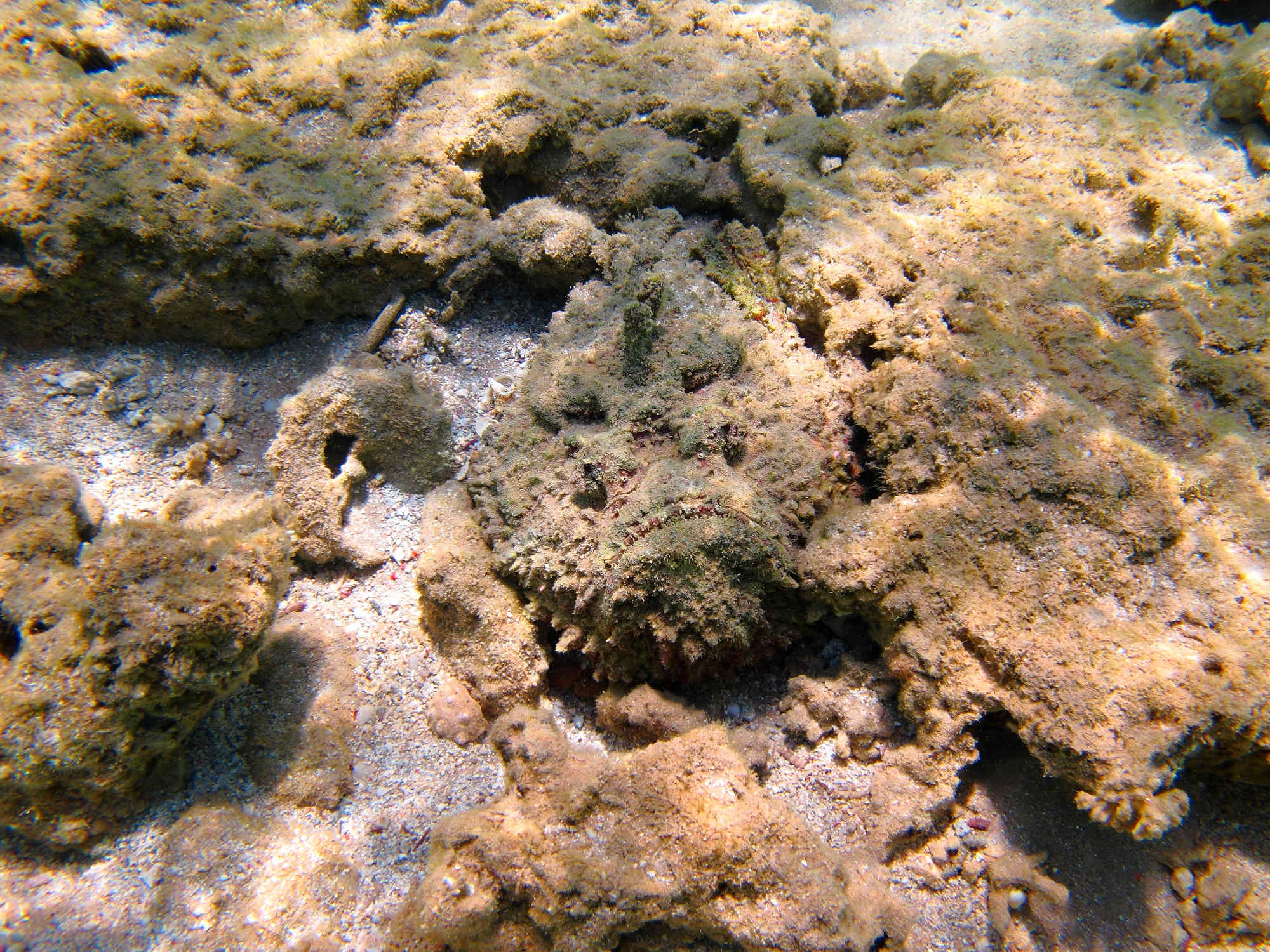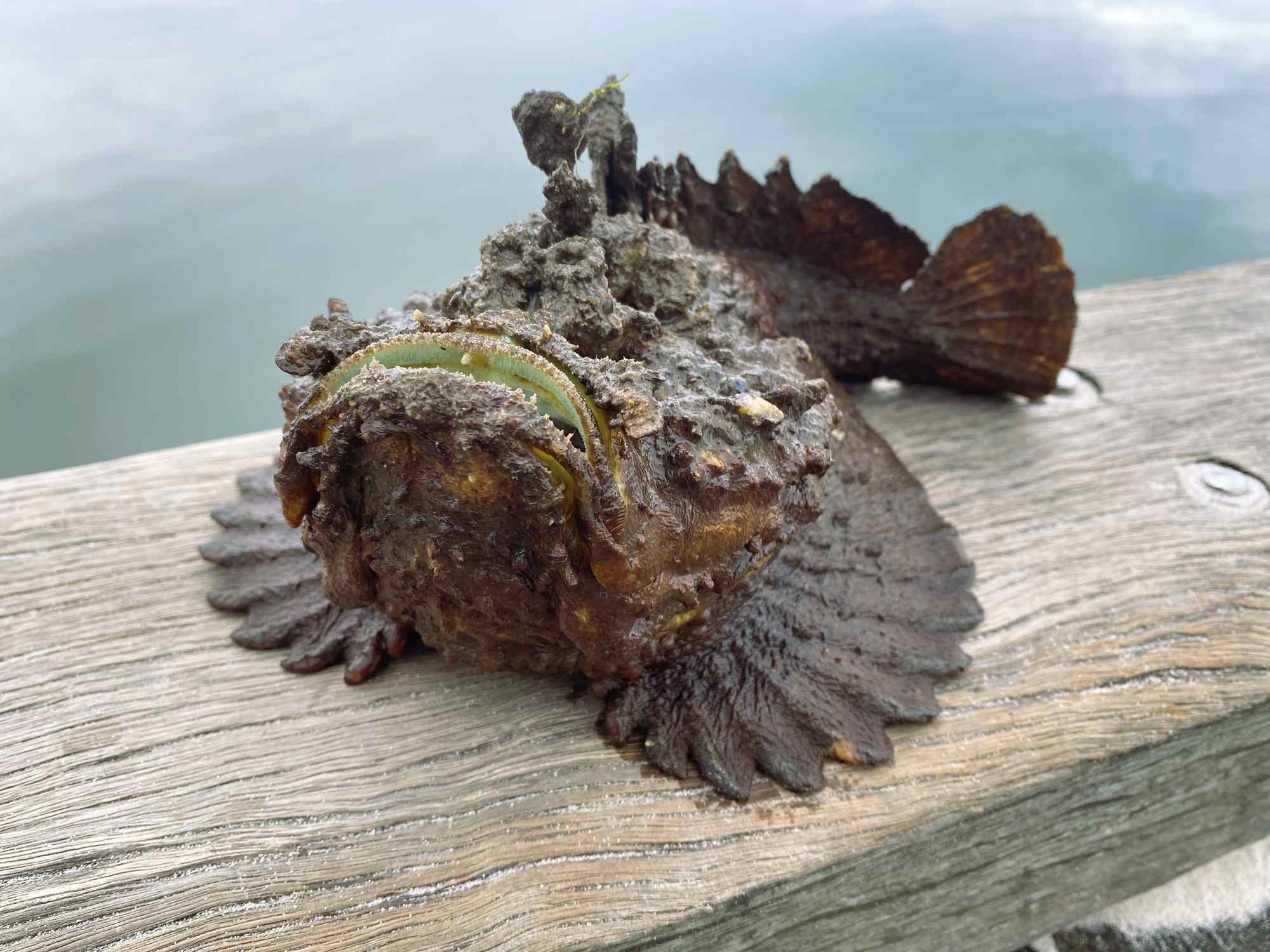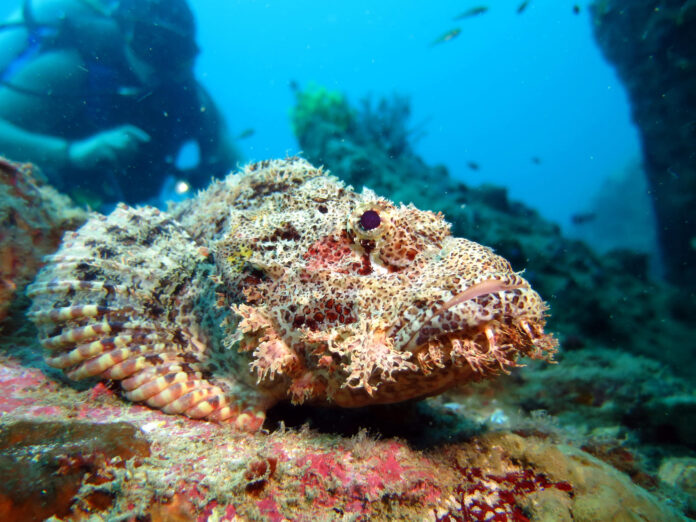Emergency services officials are reminding beachgoers of the threat posed by stonefish, following a slew of stings on the Sunshine Coast.
Health and surf lifesaving representatives have reminded people how to try to avoid being stung, and what to do if they are injured by the camouflaged creatures.
Twenty-four people presented to local health facilities with stonefish stings from January to September this year, compared to 14 during the same time frame last year.
About 90 people have sought treatment across the region’s health centres since the start of 2020.
A huge stonefish was reeled in at Golden Beach last year.
A Sunshine Coast Health spokesperson said the world’s most venomous fish could deliver an excruciating blow.
“Stonefish envenoming is very painful, but is rarely life-threatening,” they said.
“In the event of a sting, phone triple zero and immediately soak the affected area in hot but not scalding water, ideally 45ºC, to relieve the pain until you receive medical attention.”

The spokesperson said there were precautions that people could take to avoid being stung.
“Stonefish are present in local areas of the Sunshine Coast, particularly in areas with reef or rocks,” they said.
“Most stonefish-related incidents treated in our emergency departments are due to someone inadvertently standing on a stonefish, and the venomous spines penetrating a body part, usually a foot.
“To prevent stonefish stings, sturdy footwear or reef shoes should be worn while wading in rocky or weedy areas.”
They can be up to 50cm in size but are commonly 20cm to 30cm.
Local resident Cameron Taggart caught one that was estimated to be about 30cm or more while fishing alongside a jetty in Golden Beach last year.
“When I got it to the surface and saw it was a stonefish I thought ‘you are kidding’,” he said.
University of the Sunshine Coast marine ecologist Dr Ben Gilby told Sunshine Coast News earlier this year that stonefish were common in the region and a sting could be fatal.
“Stonefish have 13 spines along their dorsal fish, which can envenomate anyone or anything that comes into contact with them,” he said.
“They will not go out of their way to attack people; however severe envenomation can result in heart failure and death in the worst instances.”

Sunshine Coast chief lifeguard Anthony King said local lifeguards had not had to treat a person for a stonefish sting for some time.
“But if someone comes to us and they have stood on a stonefish, we put their foot into the hottest water that they can handle – not boiling but extremely hot, to numb the pain, and they stay like that until the pain recedes,” he said.
Mr King said beachgoers should be aware of what could be beneath the ocean surface.
“Everyone knows there are hazards in the ocean and stonefish are one of those hazards,” he said.
“They could be in rockier areas and areas where there are drains.”
Do you have an opinion to share? Submit a Letter to the Editor at Sunshine Coast News via news@sunshinecoastnews.com.au. You must include your name and suburb for accountability, credibility and transparency.

Mr King said lifeguards were braced for a busy stinger season, with more onshore winds and more people expected at the beach due to likely warmer conditions associated with El Nino.
“Thankfully, the last three seasons with La Nina, we’ve had minimal north-easterly winds which tend to push the bluebottles in, so we’ve had a few summers with limited amounts of bluebottle stings, but that could change this summer,” he said.
“The treatment for bluebottles is the same as the treatment for stonefish.
“It’s recommended people who are stung have a hot shower that sort of gets rid of it (the pain), or the next best thing is ice.”
Hundreds if not thousands of people typically get stung by bluebottles on Sunshine Coast beaches each year.
“Where there are bluebottles, there can also be hair jellies or snotties (also known as lion’s mane jellyfish), and they can give you an itchy sting,” Mr King said.
Scroll down to SUBSCRIBE for our FREE news feed, direct to your inbox daily.





